- Growing Bok Choy: How to Grow and Care for Bok Choy - December 9, 2020
- Growing Snow Pea: How to Grow and Care for Snow Pea - November 4, 2020
- Growing Fennel: How to Grow and Care for Fennel - October 22, 2020
Flowers bring so much color and cheer to an outdoor space, while also being extremely beneficial for pollinators and the environment in general. If you’re new to growing flowers, you’ve come to the right place – this guide will take you through all of the steps involved in starting a new flower garden.
Choose a Site
The very first thing you need to decide when starting a flower garden is where you want that garden to be.
You probably already have an idea of this, whether it may be a few containers on a patio, a border around a lawn, or perhaps your entire backyard.
Either way, there are a few things to keep in mind when deciding on a site that will influence the design of your flower garden, as well as the plants that you’re able to grow.
How Much Light Does the Site Get?
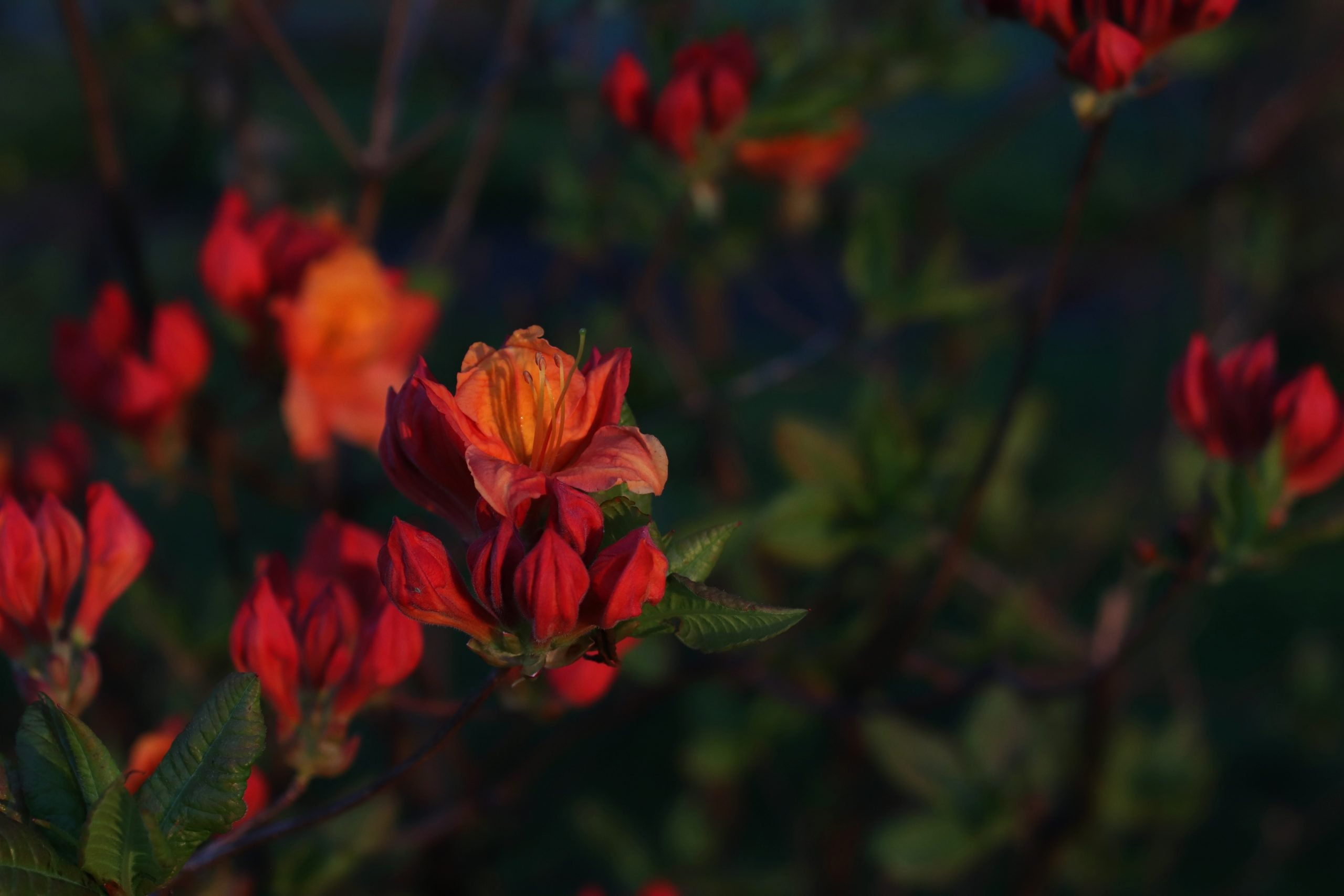
Plants need light in order to grow, and while there are a handful of flowers that can tolerate heavy shade, this really does limit your flower options.
The majority of flowers thrive in full sun, although there are plenty that will tolerate partial shade too. The shade could be caused by anything from buildings to nearby plants, so make a note of how much sun your potential site receives each day, keeping seasonal variations in mind too.
If there are particular flowers you want to grow in your new flower garden, check their light requirements beforehand. If your potential site doesn’t provide this, then you will need to choose a different location.
What’s the Soil Like?
Soil is something that you can change, although the more you need to interfere with it, the costlier and more labor-intensive your flower garden will be.
However, even if you have heavy clay soil, don’t panic – there’s plenty that can be done to amend this. All you need to do at this stage is to identify your soil type, which will be one of the following:
- Clay – soil will feel slimy, lumpy, and heavy when wet. Try rolling some into a ball – if it stays in shape and takes on quite a shiny appearance, you have clay soil.
- Sandy – soil will feel very gritty, just like grains of sand. You wouldn’t be able to roll sandy soil into a ball – it simply wouldn’t hold the shape.
- Silty – it’s unlikely that your soil is pure silt, but slightly silty soils will feel quite smooth. You will be able to roll it into a ball, but it won’t hold its shape, as well as clay soil, does.
- Loamy – this is the ideal soil type. It’s a mixture of clay, sand, and silt, meaning that the soil particles within it will vary in size. When rolled into a ball, it holds its shape well.
As mentioned, soil type can be amended. However, you would still need to know what soil you already have in order to correctly amend it.
Choose a Theme and/or Color Palette
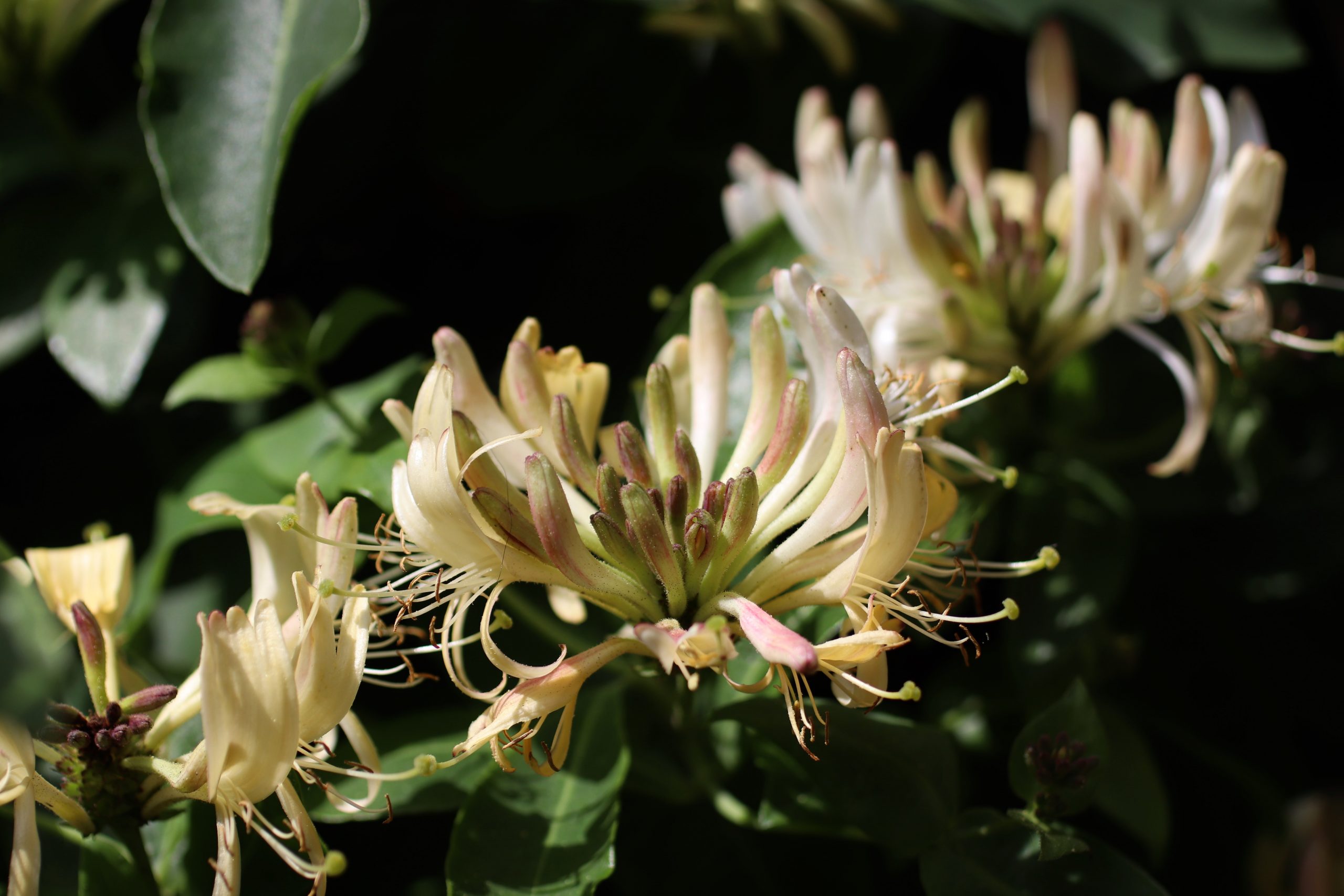
Your flower garden doesn’t need to have a theme and/or color palette, but this can make everything look much more cohesive.
You may already have a theme in mind, but some popular options include:
- A traditional English country garden
- A zen Japanese garden
- A fragrant perfume garden
- A night garden (with flowers that bloom at night)
- A tropical garden
Alternatively, simply pick a color palette instead. From calming neutrals to hot, bold shades to pretty pastel hues, having a color scheme can really make a flower garden stand out.
Design the Layout of Your Flower Garden
It’s now time to put together a rough layout of your new flower garden.
All you need is some paper and a pencil, although there are a few apps out there that could help you with this too. Sketch out your new garden’s rough outline, including any boundaries, fences, gates, and nearby buildings.
Then, start filling in your garden outline with various shapes and colors. Don’t forget to also keep plant heights in mind – many like to place taller plants at the back of a flower garden, low-growing plants at the front, and have ground-cover flowers filling in any bare spaces in between.
However, don’t be afraid to mix things up a bit – it’s important that your flower garden reflects your individual personality.
Choose Your Flowers
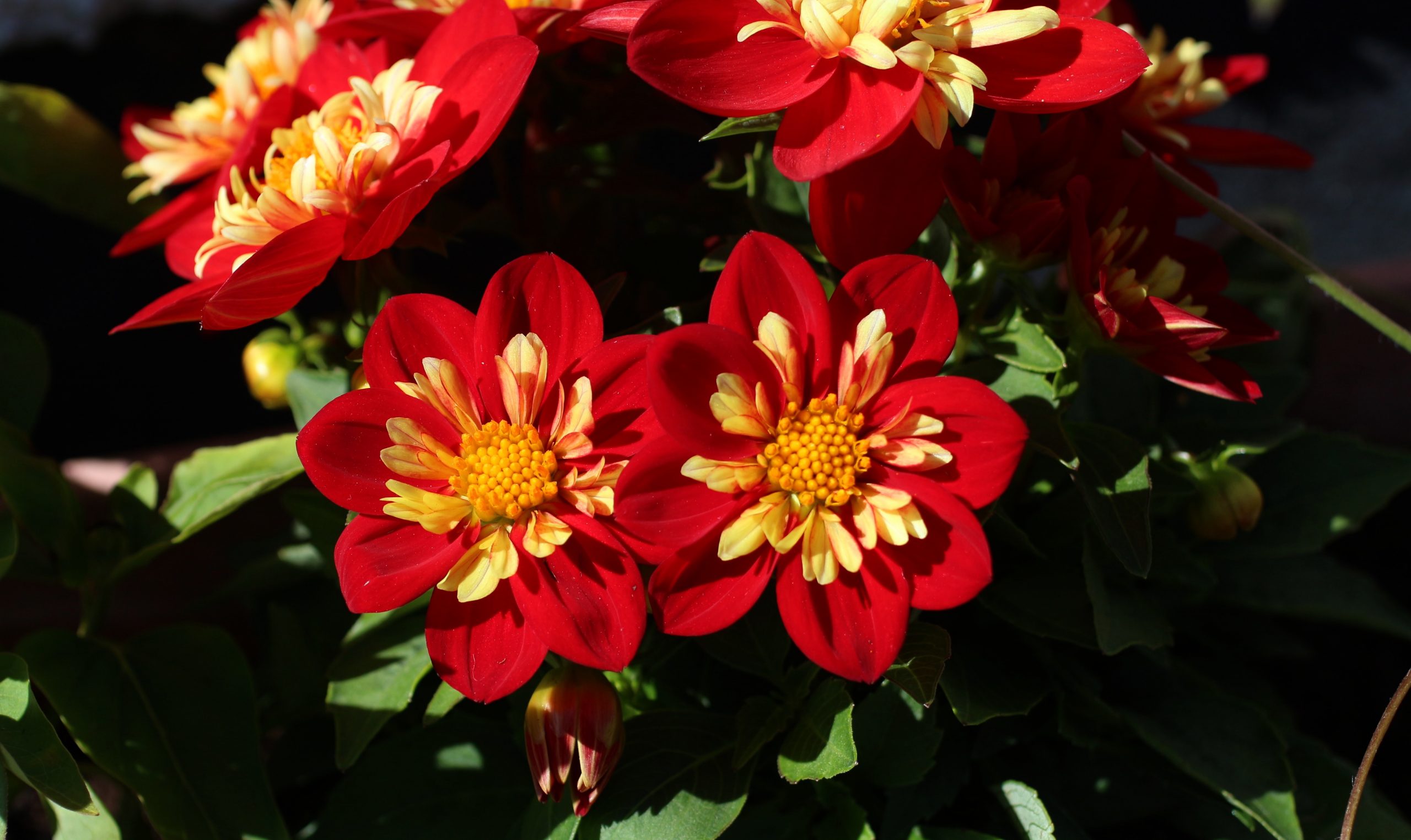
Now that you have a general idea of the layout of your new flower garden, and also know more about the growing environment you’re going to be working with, you can start to choose specific flowers.
For many, this is the fun stage of the planning process, but it’s also the one that can take the most time.
Flowers fall into two main categories; annuals, which need to be re-planted every year (although some will happily self-seed throughout your garden), and perennials, which will return on their own each year.
If you want your flower garden to be as low-maintenance as possible, make sure that it’s dominated with perennial flowers. However, annual flowers do tend to be much bolder and brighter, so it’s always worth mixing some of these in too. A flower garden filled only with annuals will definitely make a statement, but there will be a lot of work involved each year.
Don’t forget to keep your climate, soil type, and garden design in mind when browsing and choosing flowers. It would also be a good idea to pick a range of plants that flower at different times of the year, to keep your flower garden looking spectacular for as long as possible.
Low-Maintenance Annuals
Some annuals are much easier to grow than others, so these are often the best choice when first starting a flower garden. Over time, you can always replace these annuals each year with plants that require more care and attention.
- Pansies and violas – pansies and violas come in so many different colors, and there are plenty of winter varieties available too. These will keep your flower garden looking bright and cheery even on a cold, snowy day
- Snapdragons – these whimsical flowers can grow quite tall, giving them a dramatic look when interplanted with other flowers. They also self-seed easily, meaning that you’ll find new plants appearing in your flower garden each year
- Dianthus – this low-growing flower comes in a variety of bold shades and is also loved for its exotic, clove-like scent
- Marigolds – not only do marigolds look great in just about every flower garden, but they also contain natural chemicals that help to keep pests away from the plants around them
- Cosmos – extremely easy to grow and care for, cosmos enjoys plenty of sunlight, and will reward you by self-seeding itself for the following season
Show-Stopping Perennials
There are so many different perennial flowers out there, but one of the easiest ways to get started is with bulbs. These can be planted throughout your garden and will come up between your other plants each year.
- Bluebells – these are a classic, but be prepared for them to slowly take over a small garden
- Anemones – these fast-spreading blossoms look similar to daisies and thrive in partial shade, making them perfect for planting underneath taller flowers
- Snowdrops – another great ground cover flower, snowdrops naturally grow underneath trees in woodland settings, meaning that they can tolerate quite a bit of shade
- Daffodils – usually one of the first bright flowers to blossom in the spring, daffodils are available in so many different shapes and sizes – you will even find some scented varieties out there
- Tulips – just about everyone loves tulips and you can have these bulbs flowering throughout the year if you choose a good mix of varieties
Bulbs are a must in every flower garden, but don’t forget to also take a look at some of the other perennial flowers out there:
- Roses – available in so many different colors, roses are loved for their classic scent. They’re also generally quite hardy and pest-resistant, making them easy to grow
- Hellebores – the lush foliage of a hellebore will bulk out your flower garden in the summer, before its blooms start to form in mid-winter, giving you flowers at a time when other plants are usually finished for the season
- Daylilies – incredibly hardy, daylilies will flourish in just about any soil type. Although they only flower for one day, they multiply quickly, so you will soon be able to enjoy a much longer flowering season
- Peonies – these flowers will get larger and more impressive each year, with an amazing scent that will fill your garden with a sweet fragrance
- Chrysanthemums – these will fill your garden with a burst of color each fall, and there are both annual and perennial varieties available
Edible Flowers
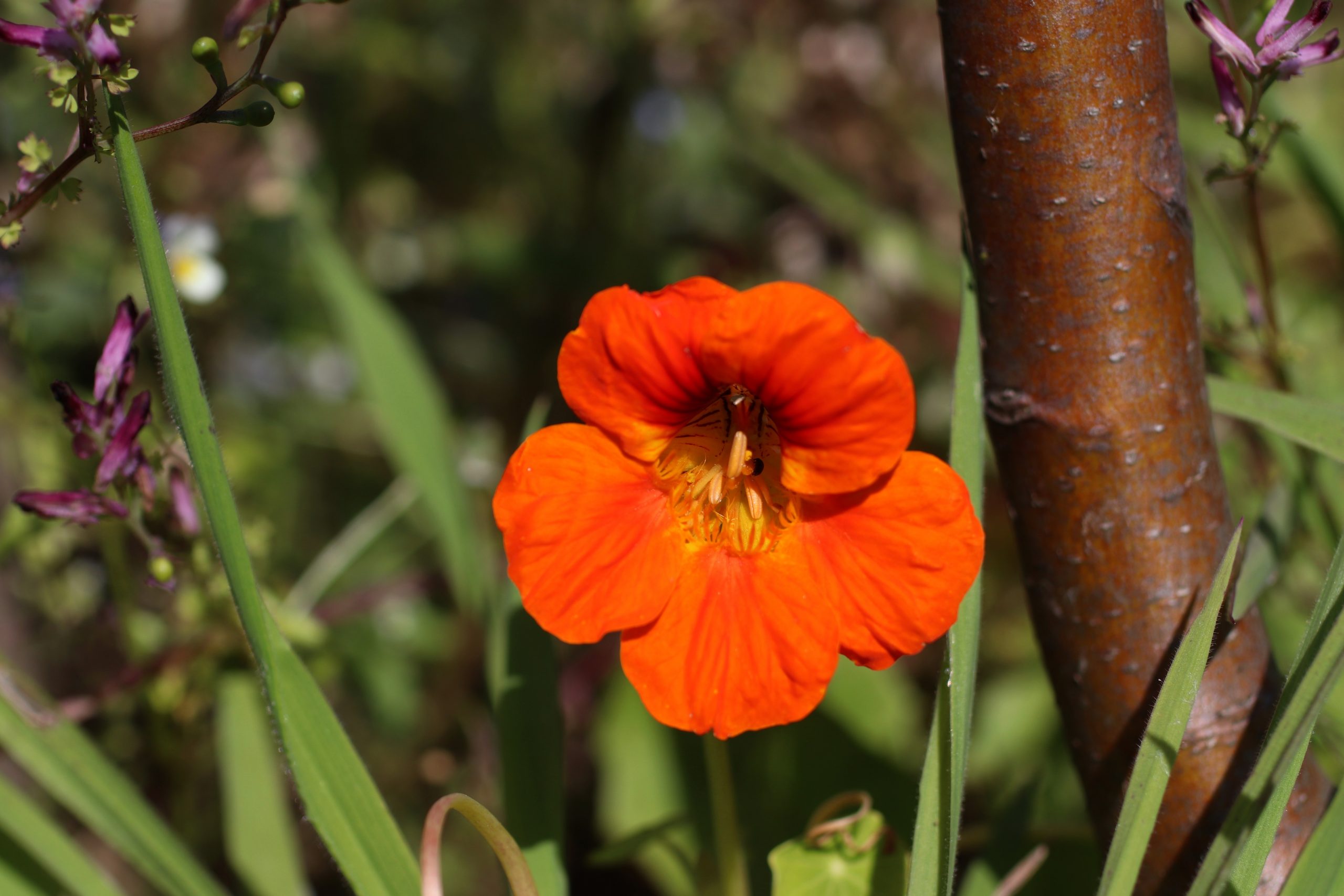
For a truly multifunctional flower garden, try adding in some edible flowers too. They can be used in everything from salads to drink garnishes, not only adding so much beauty but also often being packed with nutrients and antioxidants too.
- Nasturtium – an easy plant to grow, both nasturtium leaves and flowers are edible, with a subtle peppery flavor that really perks up a dish
- Lavender – not only do lavender flowers look and smell incredible, but they are edible too
- Borage – this is a great flower for attracting pollinators to a garden, but they are also known for their cucumber-like flavor
- Chamomile – the daisy-like flowers of chamomile are the ingredient of choice for a soothing, sleep-inducing tea
- Sunflowers – tall, bright, and majestic, sunflowers are great for borders, and their edible seeds are packed with nutrients (Check out here more facts about the purple sunflower type)
Growing from Seed vs. Purchasing Plants
When it comes to growing flowers, you have two main options; either grow them from seed or purchase them as plants. You can also do a mix of both.
Growing from seed takes more time, but can save you so much money, especially if your flower garden is going to be quite large.
You will also have so much more choice when it comes to varieties if you grow from seed, and the plants you end up with will be stronger and more suited to your growing environment than those you buy-in.
However, buying in flowers that are ready to be planted out will give your garden an instant impact. If you don’t have the time to nurture seedlings, or don’t have the space for lots of seed trays, then purchasing plants is the better option.
Most gardeners will do a bit of both, especially since some flowers are so easy and low-maintenance to grow from seed.
Prepare Your Flower Garden
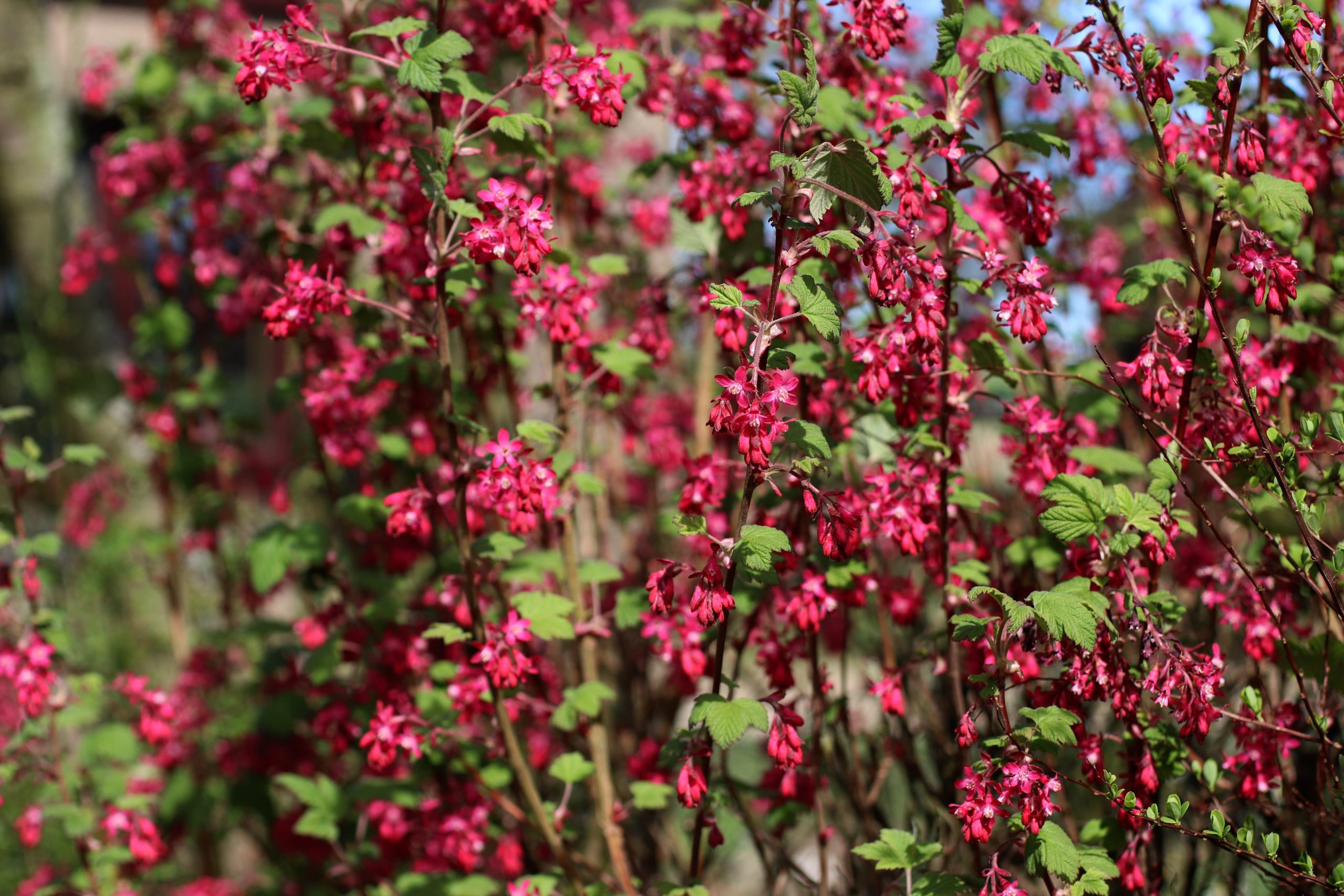
Once you know which flowers are going where you can then begin to prepare your flower garden for planting.
Weeding
It’s unlikely that your chosen site is completely bare – you probably have a few weeds growing through it already.
This is the part that most people hate, but weeding doesn’t need to be back-breaking. If you can see lots of perennial weeds, then these do need to be pulled out, but anything else can simply be covered with a layer of damp cardboard.
The cardboard will stop light from reaching the weeds beneath, slowly killing them off, while also breaking down and feeding your soil at the same time.
Ideally, you should do this the season before you’re going to be planting out your flower garden. However, doing it even a few days before can still be beneficial.
Amending the Soil
While some flowers don’t mind heavy soils, most prefer to grow in soil that’s loose and well-draining.
If your garden soil is already like this, then you don’t need to do much to it. A simple top-dressing of compost, placed over the top of any cardboard you’ve used, will add in some extra nutrients, and you could also mix some sand or perlite through to increase drainage.
If your soil is heavy clay, adding compost over the top would still work, but you would need a much thicker layer. You will also need to keep adding to this each year – the more you build organic matter and allow plant roots to break through the heaviness beneath, the lighter and looser your clay soil will become over the years.
Raised Beds
Many choose to grow a flower garden in raised beds instead of in the ground, and there are both pros and cons to doing this.
A raised bed gives you full control over the soil you place within, and it also means that you start off weed-free. Tending to your flowers feels less labor-intensive too, since you won’t need to bend all the way down to the ground.
However, a raised bed flower garden requires more maintenance. The soil will dry out much faster, especially in the summer, so it will need to be manually watered more.
Since plants in a raised bed won’t have access to any of the natural nutrients in the ground, you will also need to fertilize your flower garden more frequently.
Plant Your Flower Garden
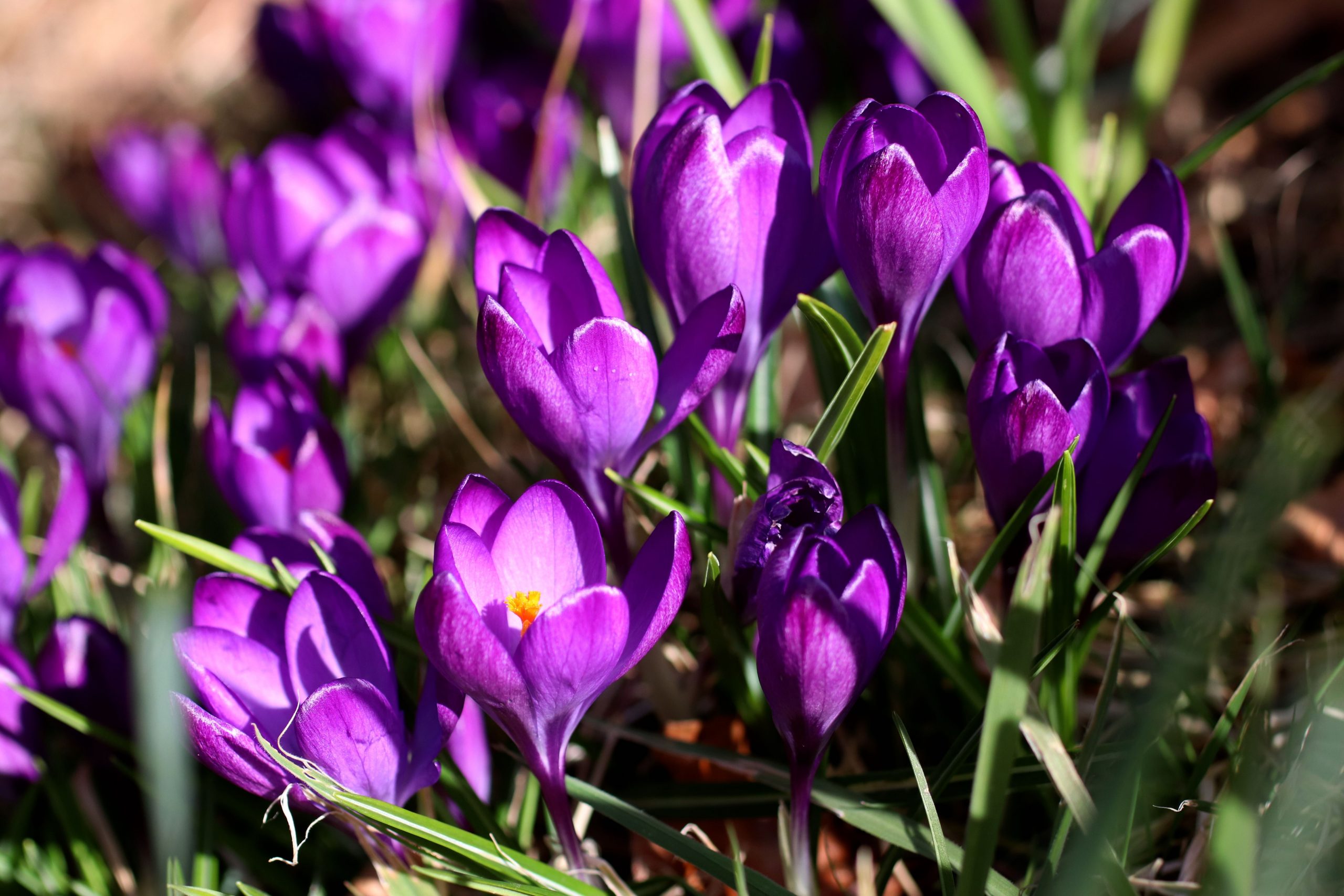
The best time to plant a flower garden is in the spring, after your last frost, although there are a few varieties that do best when planted in the fall.
If you’re growing seeds that can be direct sown, simply use a trowel to create a thin furrow in the ground and sow your seeds in there, before covering them over with a light layer of soil and watering in.
However, keep in mind that some flower seeds need light in order to germinate, so will do best when just scattered lightly over the surface. If this is the case, sow more than what you need – chances are that the birds around you will help themselves to some of your seeds.
Some seeds are best started off in pots or trays indoors. Wait until the soil warms up before planting your seedlings out, but do also check that they have formed a strong root system before you transplant them.
When planting seedlings or larger plants, dig small holes in your soil before placing each plant in. Cover the holes back over and tamp them down, before watering well.
Don’t forget to keep spacing in mind while doing this – some flowers do well when packed in together, but others will need more space.
Maintaining a Flower Garden
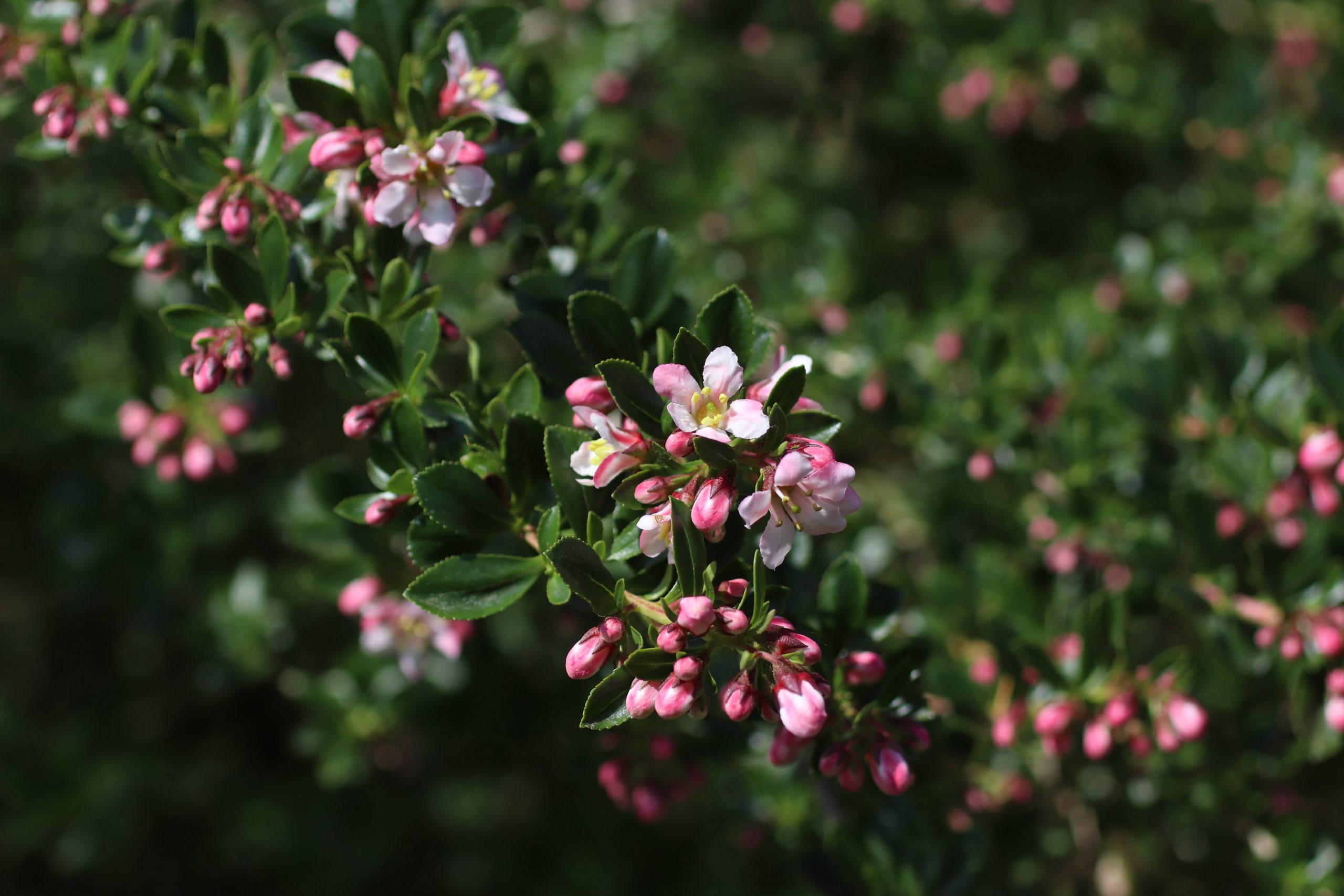
Once you have planted your flower garden, you will need to make sure that everything is kept well-watered.
Some flowers may be drought-resistant, but they will need to be well-established in the soil first. Even so, most flowers still do best when given a consistent supply of water.
However, be careful not to over-water your flowers either. Constantly soggy roots will lead to your plants suffocating, as they won’t be able to absorb enough oxygen – this is why it’s so important to ensure that your soil is well-draining before you get started.
Mulching your flower garden can help to control moisture levels, while also preventing weeds from emerging. Good mulch options include:
- Grass clippings
- Straw or hay
- Shredded leaves
- Shredded bark
In addition to watering your flower garden, you will also need to regularly weed and fertilize it. There are many flower fertilizers out there, but a simple liquid seaweed extract is often all you need – this will help to improve the quality of your soil over time while also providing a slow-releasing source of nutrients to all of your flowers too.
Keep an eye out for pests and diseases as well. If you ever notice that one of your plants isn’t looking quite right, take some photos and do a quick search on the internet. Pests and diseases need to be dealt with as quickly as possible – a serious infestation could easily be fatal to a plant, and may also spread to the other flowers around it.
FAQs
Answer: Some flowers that bloom in the shade include geraniums, hostas, astilbes, and fuchsia. However, the plants won’t produce as many flowers as they would have if they were grown in the sun.
Answer: Phlox, hibiscus, lavender, and coneflowers are known for their long flowering times. However, you can still enjoy flowers that have a short blooming season throughout the summer if you sow seeds and plant out seedlings every few weeks.
Answer: The easiest way to determine this is by taking a look at a color wheel – colors that are opposite from each other on the wheel will provide the most contrast. For example, pinks and reds complement greens, while yellow flowers look good with blues and purples.
Answer: Regular fertilizer applications can help extend blooming times, along with the number of flowers a plant produces. Dead-heading spent blooms, which simply means pinching or cutting off dying flowers, also encourages plants to produce more.
Answer: While a flower garden can be planted in a grassy area, you will need to first remove the top layer of grass before preparing the soil. Alternatively, smothering the grass with damp cardboard for a season will give you a new flower bed that’s easy to work with.
Conclusion
Starting a flower garden does require quite a bit of work, but the end result will be more than worth it. Over time, your flower garden will keep growing bigger and more impressive, especially if you’ve included a good selection of perennial plants, and you will be able to enjoy its beauty for so many years to come.
Read More:
- How to Grow and Care for Japanese Iris
- How to Grow and Care for Crocus
- How to Grow and Care for Loropetalum
- Best Long Planter Boxes to Enhance Your Garden With
- How to Find the Best Aeroponic Cloning Systems in 2021
- Peony Types and Varieties We Are Obsessed With
- Types and Varieties of Roses That Will Make Your Garden Beautiful
- Incrediball Hydrangea Growing Guide: How To Grow It Yourself?
- Yellow Hibiscus Growing Guide: Everything You’ll Need For Growing It
- Quick Fire Hydrangea Growing Guide: Step by Step
- How to Harvest Sunflower Seeds Even If You’ve Never Done It Before
- Pink Hibiscus Growing Guide: How To Grow One Easily?
- Dinner Plate Hibiscus Growing Guide For Your Own Garden
- Best Fiberglass Planters That Wil Look Marvelous In Your Home
- Pink Sunflower Varieties Guide
